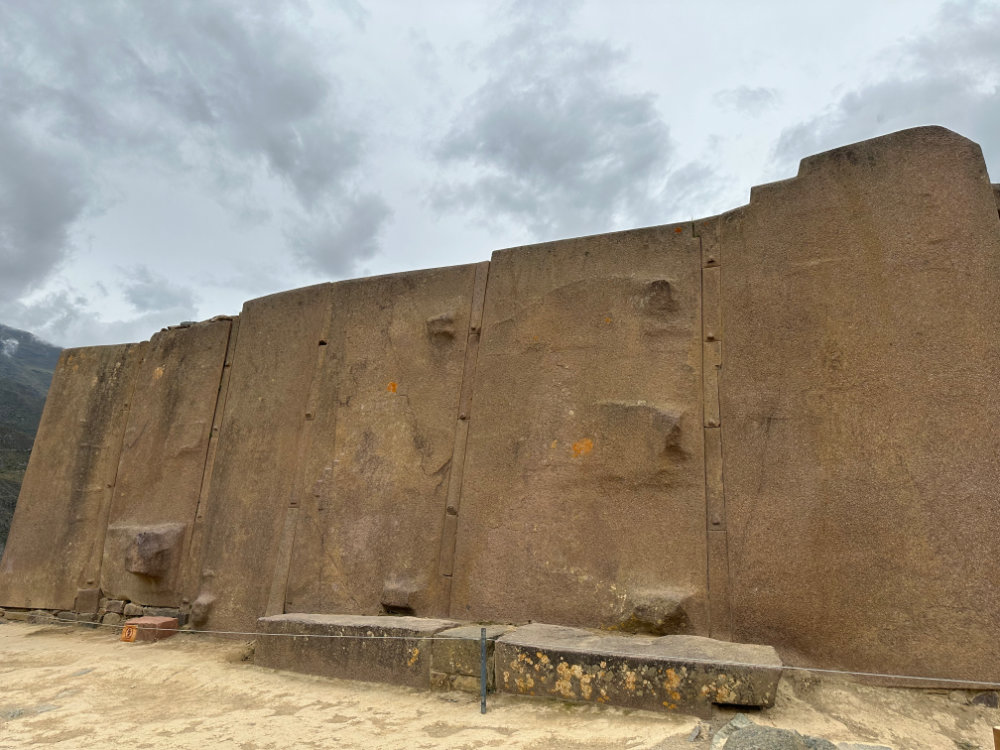Ollantaytambo: Gateway to the Inca Trail and Historical Insights
Region: South America
Country: Peru
Deep nestled within the heart of the Sacred Valley of Peru lies the charming village and Inca archaeological site of Ollantaytambo. Often referred to as “Ollanta” by the locals, this ancient town is not only a gateway to the iconic Inca Trail leading to Machu Picchu but also a fascinating destination steeped in history and surrounded by breathtaking natural beauty. It’s the perfect place for travelers passionate about history, archaeology, culture, and adventure to delve deep into the rich past and vibrant present of the Inca civilization.

Exploring the Ruins
The town of Ollantaytambo is dominated by formidable stone terraces that climb up the hillside, built by the Incas. As you ascend the terracing—using the very steps the Incas themselves would have walked—you’re treated to a panoramic view of the quaint village and the verdant Sacred Valley that stretches majestically below. At the top, the Temple of the Sun stands as a testament to Incan architectural brilliance, with its precisely cut stones that baffle modern-day historians and archaeologists.
Apart from its architectural marvels, the site also has an intriguing historical significance. It was here that one of the greatest battles of the Spanish conquest was fought. Manco Inca, the rebel Inca leader, mounted a defense against the invading Spaniards from these very fortifications.







The Living Inca Village
Ollantaytambo is unique because it’s one of the few places in Peru that still retains its original Inca urban planning. The town is laid out in neat blocks that can be directly traced back to the Inca era. Walking through the town, you’ll notice water flowing along channels that line the streets, a continuation of the original Incan aqueduct system. It’s a living museum, where local traditions are still alive, and ancient buildings are still in use.

Adventure and Activities
For the adventure travelers, Ollantaytambo offers a range of activities. From here, many choose to embark on the Inca Trail , a four-day trek that takes you through stunning mountain landscapes to Machu Picchu . Besides hiking, the vicinity of Ollantaytambo is great for mountain biking, horseback riding, and even rock climbing.
For those who enjoy a more laid-back approach, a visit to the local market offers a colorful glimpse into local life. Here, artisans sell handmade crafts, textiles, and jewelry—perfect for unique souvenirs.
Cuisine Scene
After a day of exploration, nothing beats sampling the local cuisine. Indulge in traditional Peruvian dishes like “lomo saltado” (sautéed beef), “cebiche” (raw fish cured in citrus juices), and “pachamanca” (meat and vegetables cooked underground). Many restaurants in Ollantaytambo also offer “chicha,” a traditional corn beer that’s a must-try for any visitor.
Travel Tips
Best Time to Visit: The best time to visit Ollantaytambo is during the dry season from May to October. However, June to August is peak tourist season, so booking accommodations in advance is recommended.
Currency: The local currency is the Peruvian Sol (PEN). Many places also accept US dollars. Credit cards are widely accepted in bigger hotels and restaurants, but having cash on hand is a good idea, especially for small purchases in the market.
Getting There and Away: Ollantaytambo is well-connected by road and rail. It is about 1.5 to 2 hours from Cusco by road. Also, it’s a major train hub with services to Machu Picchu and Cusco , making it an ideal base for exploring the Sacred Valley .
Ollantaytambo is a compelling blend of history, culture, and adventure. Whether it’s marvelling at ancient ruins, exploring the charming village, or setting off on a trekking adventure, Ollantaytambo offers a captivating experience that is both enriching and exhilarating. It’s a place where every trail and stone tells a story, waiting to be experienced and cherished.


